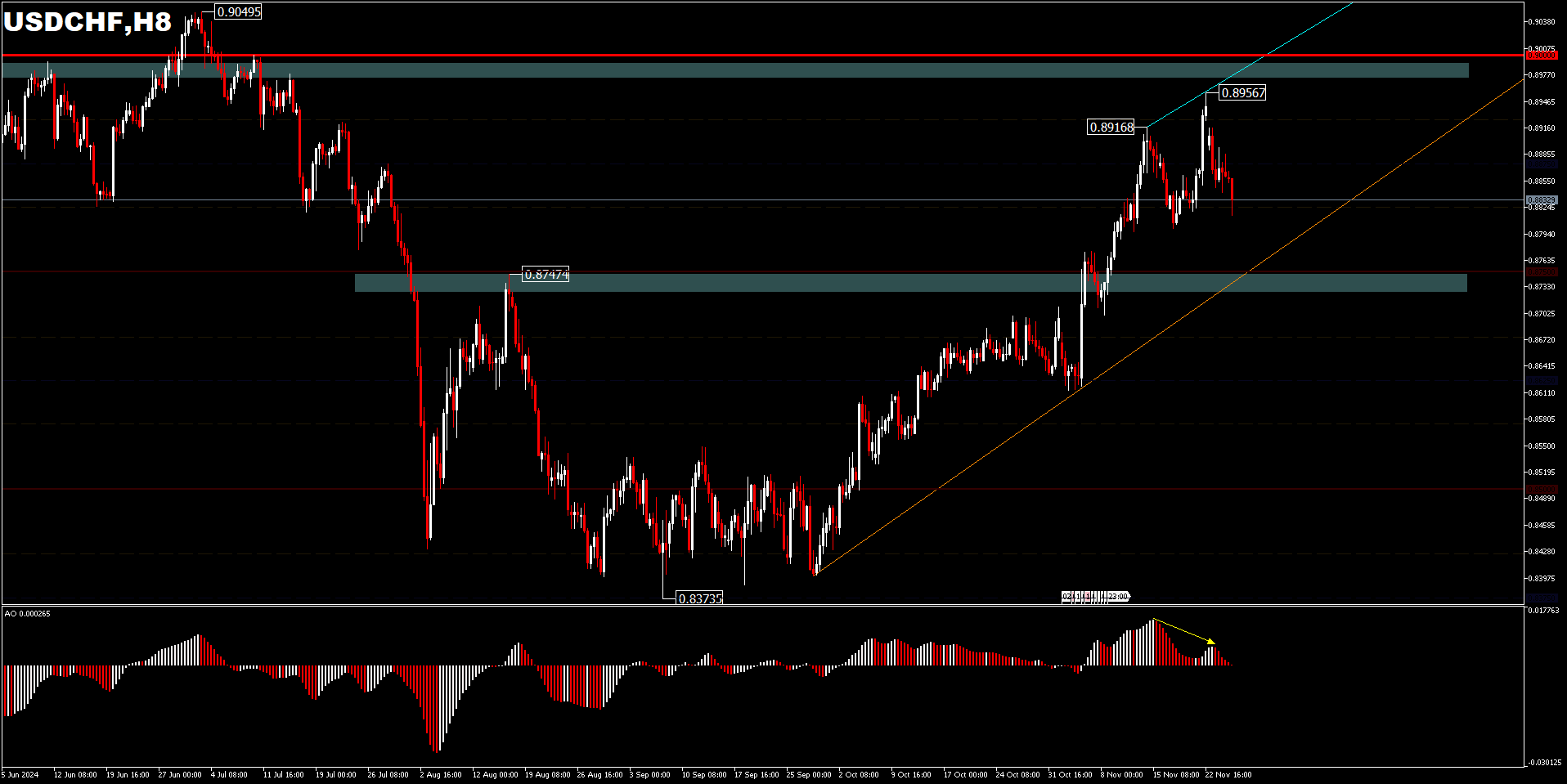The Swiss franc has slightly strengthened to around 0.89 per USD, moving away from recent four-month lows, amid dollar weakness after President-elect Donald Trump chose fiscally conservative fund manager Scott Bessent as US Treasury Secretary.
The recent decline in Swiss inflation has led to market expectations of further interest rate cuts by the Swiss National Bank (SNB) later this year and through 2025 to counter deflationary pressures. Meanwhile, Swiss National Bank (SNB) Chairman Martin Schlegel reiterated that the central bank will continue to prioritize low inflation as a cornerstone of its monetary policy, stressing that keeping inflation in the 0-2% range has been key to Switzerland’s strong economic performance in recent years.
The USDCHF pair weakened near 0.8800 during the European session on Wednesday. Weakening US Dollar ahead of October US inflation data weighed on the pair. Meanwhile, the USDindex, which measures the value of the USD against a basket of currencies, moved down near a weekly low as profit-taking set in. The USDindex held around 106.9 on Wednesday as investors braced for the release of the latest US PCE price index report, the Federal Reserve’s preferred measure of inflation. Market participants are also looking forward to other important data, including initial jobless claims, the second reading of GDP and personal income and spending figures.
Minutes from the November FOMC meeting revealed that officials were optimistic about easing inflation and labor market strength, which supports the case for further rate cuts. However, they indicated a preference for gradual adjustment. Traders reduced their expectations for a rate cut in December. Futures traders now estimate a 57.7% probability that the Fed will cut rates 25 bps, down from about 69.5% a month ago, according to the CME FedWatch Tool.
On Tuesday, the Dollar initially rallied, after Trump threatened tariffs on China, Mexico, and Canada, but reversed course as traders awaited more details on the proposed measures. The Dollar remained steady against most major currencies, but weakened against the Kiwi and Yen. Traders will be closely monitoring developments around geopolitical risks. Any signs of rising tensions could increase safe haven flows, which favors the Swiss Franc.

From a technical perspective, the intraday bias in USDCHF remains neutral as consolidation continues below 0.8956. The outlook will remain bullish as long as 0.8747 support holds, in case of a pullback. A break of 0.8956 would resume the rally from 0.8373, and target 0.9000; 0.9049 round numbers or 0.9223 key resistance would be next. AO divergence bias is seen to validate the fading rally momentum. While a drop below the 0.8747 key level would signal the 0.8373 rebound has completed at 0.8956.
Click here to access our Economic Calendar
Ady Phangestu
Market Analyst
Disclaimer: This material is provided as a general marketing communication for information purposes only and does not constitute an independent investment research. Nothing in this communication contains, or should be considered as containing, an investment advice or an investment recommendation or a solicitation for the purpose of buying or selling of any financial instrument. All information provided is gathered from reputable sources and any information containing an indication of past performance is not a guarantee or reliable indicator of future performance. Users acknowledge that any investment in Leveraged Products is characterized by a certain degree of uncertainty and that any investment of this nature involves a high level of risk for which the users are solely responsible and liable. We assume no liability for any loss arising from any investment made based on the information provided in this communication. This communication must not be reproduced or further distributed without our prior written permission.



















